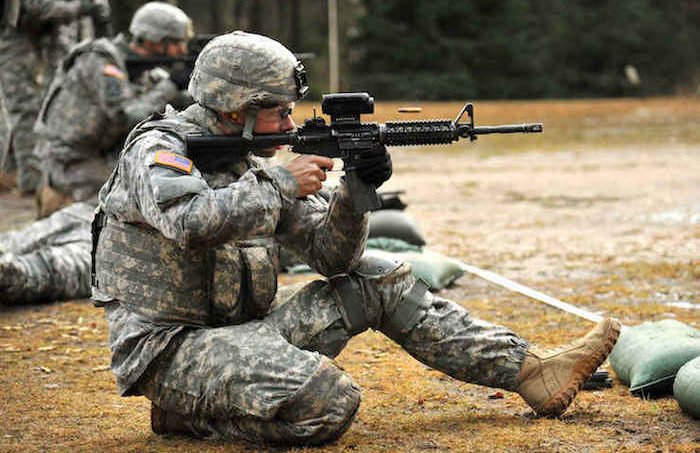
The United States Army is changing the scoring of their rifle qualification course in an apparent attempt to more clearly define who should obtain achievement pins. The adjustments have kept the overall passing score at its meager 23 hits out of 40 but alters the scoring requirements to achieve more coveted marksman and sharpshooter awards. Expert standards will remain the same and require at least 36 hits out of 40 shots.
Though the military and American law enforcement are distinct in function and purpose, the two often share similar combat of arms and even self-defense training.
Many law enforcement agencies (especially state police forces) established their chain of command, ranks, uniforms, disciplinary measures, and more, based upon established military doctrines. The influence of the military upon law enforcement firearms, equipment, and structure cannot be underestimated.
As such, this rather shocking lowering of rifle qualification standards may see a much broader impact as law enforcement agencies around the country evaluate their own firearms training programs and requirements.
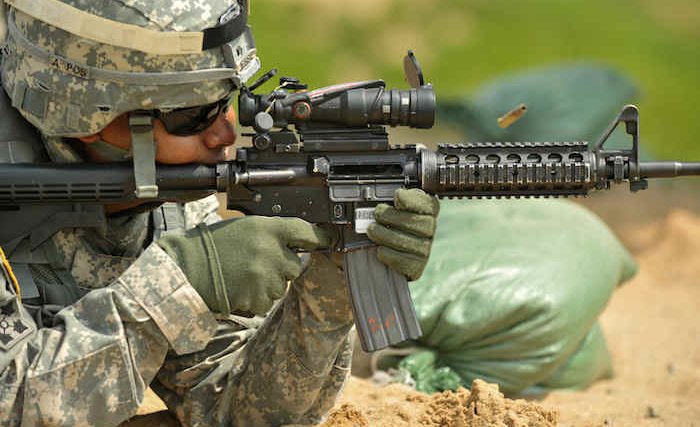
Previous Rifle Qualification
For several decades the U.S. Army has established a 40-round rifle qualification course designed to test the soldier’s ability to engage targets at various distances out to 300 meters.
Army rifle qualification ranges use pneumatically controlled pop-up silhouette targets of an “average” male upper torso and head. This is the classic “Ivan” range from the Cold War.
These hard plastic targets are designed to pop up according to the range masters controls (during training), or pre-programmed series (qualifications) under pneumatic power. If a soldier shoots the target, the target will drop, and send an electronic “hit” count to the range master’s control panel.
Targets are programmed to pop up or drop in time intervals determined by the range master or course of fire.
The Army rifle course was designed for the M16/M4 rifle fielded by the Army since the Vietnam war. Though previous Army rifle courses may have involved shooting targets at greater distances, the current qualification course considers the most likely engagement distances and only requires soldiers to engage out to 300 meters.
Even with significant modifications to the rifle and ammunition, the M16/M4 chambered for the 5.56mm NATO cartridge proved to be a capable battle rifle. However, the drop in energy and accuracy past 500 yards has caused some to request rifles chambered in cartridges ranging from the latest 6mm offereings to the sniper preferred .308 Winchester.
A recent U.S. Army rifle qualification would have the soldier engage targets in three stages involving a change of shooting platform:
- 10 rounds: standing, supported in foxhole through a fortified structure opening
- 20 rounds: prone, supported through a fortified structure opening; and
- 10 rounds: kneeling, supported over the fortified structure (shorter ranges)
A newer U.S. Army rifle qualification has been reported to have been modified to the following (3) stages of engagement:
- 20 rounds: prone, supported
- 10 rounds: prone, unsupported
- 10 rounds: kneeling, unsupported
There was actually an Alt-C course for soldiers to qualify on a 25-meter range, using targets proportionally designed to match targets out to 300 meters. This allowed soldiers to qualify without severe weather interference, or when assigned to an area without a 300-meter range.
Previous Scoring
In the two 300-meter qualification courses the Army used the following scoring method to designate soldier performance:
- Marksman = 23 to 29 hits
- Sharpshooter = 30 to 35 hits
- Expert = 36 to 40 hits
Shooters failing to make 23 of 40 hits were required to attend remedial training until they could at least qualify at Marksman.
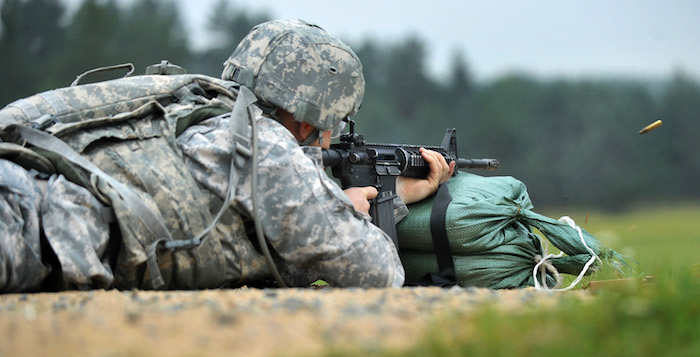
Proposed Qualification Course
The newest proposal for the Army’s rifle qualification course has already been tested at Ft. Knox in Kentucky, and Ft. Benning in Georgia. Both of these Army bases are key Basic Training bases, while Ft. Knox is a key armor training center and Ft. Benning is a key infantry, airborne, and Ranger training base.
With the selection of these two bases as testing locations, I would estimate there is significant push towards this new rifle qualification.
In the new Army rifle qualification soldiers will face four phases at ranges from 25 meters to 300 meters, but still with 40 rounds. Instead of one 20-round magazine, and two 10-round magazines as before, the new course requires four 10-round magazines. The Army will also add a barricade for soldiers to shoot supported positions. The course of fire will consist of:
- 10 rounds Prone, Unsupported – prone on elbows
- 10 rounds Prone, Supported – prone with rifle on sandbag/rest
- 10 rounds Kneeling, Supported – using firing barricade
- 10 rounds Standing, Supported – using firing barricade.
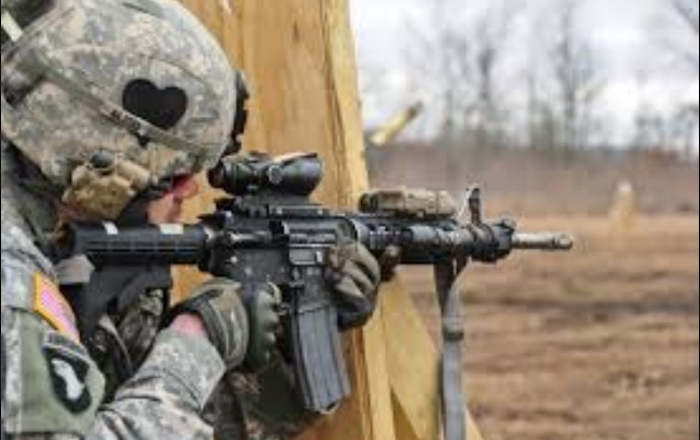
The first 10-round phase will be fired from the unsupported prone position at ranges from 50 to 250 meters with up to four targets presenting at once.
The second phase will be prone supported firing at from 150 to 300 meters.
The third phase will be from the kneeling position with targets appearing at ranges from 50 to 250 meters.
The final phase will be fired while standing (supported by the barricade) with targets at 50 to 200 meters. There is a 10-second delay between courses of fire, and soldiers are encouraged to manage their ammo and conduct combat reloads during this time.
The video below is a little corny but does a good job showing how the targets will be presented during the Army qualification course.
The new U.S. Army qualification scoring adds the ranking of “Qualified” for the lowest passing scores, and increases the number of hits necessary to obtain Marksman and Sharpshooter. The overall number of hits to “pass” the Army qualification has not changed, and remains at 23 of 40 shots. The proposed scoring breaks down like this:
- Qualified = 23 to 27 hits
- Marksman = 28 to 31 hits
- Sharpshooter = 32 to 35 hits
- Expert = 36 to 40 hits.

In this sense, I believe raising the bar for coveted Marksman and Sharpshooter scores is an important and good move for the Army. In my opinion, a soldier should not be able to parade around with a Marksman badge on their uniform for a score of 57.5%.
The addition of a barricade is promising. I believe the use of a barricade adds to the reality of many combat situations where soldiers (and officers) are instructed to find cover, even shooting to cover. Once at cover soldiers (officers) should be trained on how to best use that cover while returning effective fire.
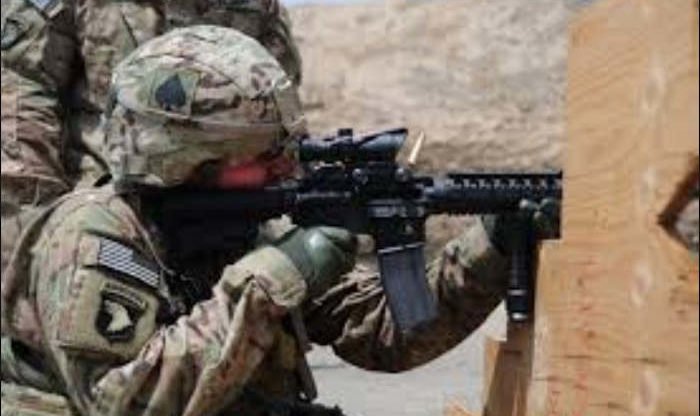
Final Thoughts
Supported shooting is almost always more accurate and effective than unsupported, so the addition of barricade supported shooting positions is a big plus in my opinion. The increase in scoring requirements for Marksman and Sharpshooter are also improvements to the Army’s overall training program and awarding of badges. A soldier must now hit 70% of shots to be a marksman, from the previous dismal performance of hitting 57.5% of total shots fired. Expert rifleman will still require a minimum of 36 hits from 40 shots.
It will be interesting to see if law enforcement takes note of the Army’s modified qualification standards and readjusts shooting and qualification standards, including a requirement of barricade shooting and combat reloads under time and without instruction. Overall, I see this as an improvement for the Army.
I also wonder what skills the Army can advance through the use of technology. For example, in my MantisX Firearms Training System review, I discovered how that unit was able to provide feedback for me to improve my own shooting.

Thankfully, my Department Firearms Instructors have long since convinced our command staff to raise the bar. Our officers must score at least an 85% on the pistol qualification and an 80% on the patrol rifle qualification, while all shotgun pellets must be within the body silhouette. Our snipers must obtain a minimum 90% score on the American Sniper Association qualification course to remain active. This course involves 600 yards of running, positional shooting, two hostage taker shots, and all under strenuous time constraints.